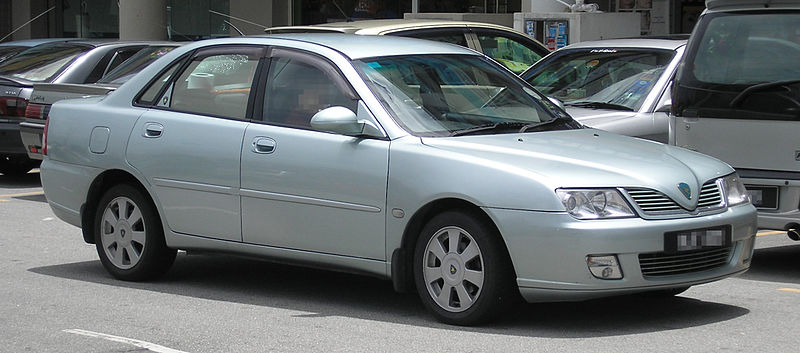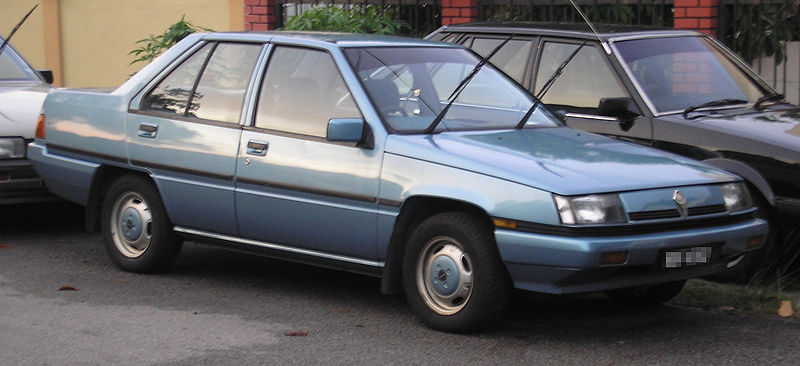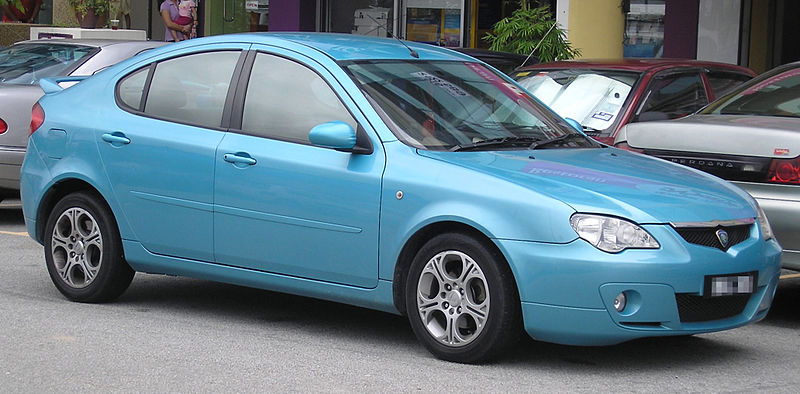Forbidden Crap: Proton’s

If you were to ask a random American, “what is a proton?”, most would have only one answer. It’s that whatchamacallit with the positive charge inside an atom, right? And then they would nonchalantly stroll away, patting themselves on the back for being so educated. They have no idea how lucky they are that they don’t have that word associated with cars.
Proton also happens to be a carmaker from Malaysia, formed in 1983 by one of its former Prime Ministers. The Malaysian government indirectly owns a majority of the company. As a Malaysian, it pains me to say that they make some of the worst cars on the road. It hurts even more when you consider that it wasn’t always this way – at one time they were the dominant player in the Malaysian market. Their first model, the 1985 Proton Saga, catapulted the country into an age of attainable vehicle ownership. The up-to-date Mitsubishi underpinnings made the vehicle desirable because of its affordability and relatively new technology. In fact, this model garnered 73% of the new car market in Malaysia when full production commenced.
So what is a car company to do after creating such a massive hit? The engineers at Proton followed God’s example, “and on the 7th day…[they] rested…” The difference is, God took one day off and Proton engineers let the Saga soldier on nearly unchanged for the next 22 years (a bit longer than the industry standard of 5 years between redesigns). Airbags, ABS, traction control, emission controls, and automatics became mainstream – but only the last item became available in the Saga. This vehicle was truly a dinosaur by the time it was discontinued in 2007.
Along the same lines, we have the Proton flagship, the Perdana. I liked it when I first saw this vehicle in person. My biggest problem with the Perdana is that it was introduced to Malaysia in 1995, with new bumpers in 2003, and no updates since. The problem goes from bad to worse when you realize that the vehicle was already old when it was introduced – it’s based on the 1992 Mitsubishi Galant. And that sorry little V6 that became available in 1999? It’s a tiny little 2.0L unit that makes less power than some 4 cylinders on the market today.
As old as the Saga/Perdana are, they got the job done without falling apart. This encouraged Proton to engineer their new ‘00 Waja in-house. It became a popular vehicle, like the Saga, because of its low price. Most of my Malaysian family have owned one.
I drove a Waja 1.6 for ~1000km. There isn’t much wrong with the way it drives, but the build quality is total crap. It’s amusing that every example I got into had some problem. My uncle’s version had a brake pedal that squeaked non-stop. My aunt’s had an incessant rattle from the back seat, and trim that fell off randomly. The one I drove had a screwed up radio display and a steering wheel squeak. In fact, the consensus was that every one out of the factory had an issue – a statement that I couldn’t disprove.
Hoping Proton would learn some lessons, I was excited to discover that Proton developed a new model in 2004 called the Gen-2. This model was also developed in-house, and was an evolution of the successful Wira from the 1990’s. Evolving a successful model with the help of lessons learned from the Waja, this couldn’t be any simpler, right?
Wrong. The amazingly incompetent carmaker managed to make it even worse than the Waja. Again, nothing terribly wrong with the way it drives – it actually handles quite well (suspension tuned by Lotus!). It’s just those pesky quality issues again. This time, they skipped the rattles and went big. The doors didn’t close properly – a well documented issue. On one of my uncle’s friends cars, the door fit was extremely bad. He went to close the door one day, and it fell flat onto the pavement. ?$*)!#!?? Another friend had his engine blow up 3 days after buying it. Transmission problems also cropped up later. That’s odd, because most people complained that the engine didn’t feel like it produced the claimed 110 horsepower. I didn’t think it was possible for 110 horsepower to blow up a transmission. Proton might have had more luck using a rope to tie the engine to the wheels.
While I lament over things like reliability or ugly styling in US vehicles, at least we’re lucky enough to have government organizations looking after us. NHTSA requires features like stability control. When issues like falling doors arise, they quickly mandate a recall. So the next time you hear that your car has been recalled, thank your lucky stars that you don’t have to deal with a Proton.




